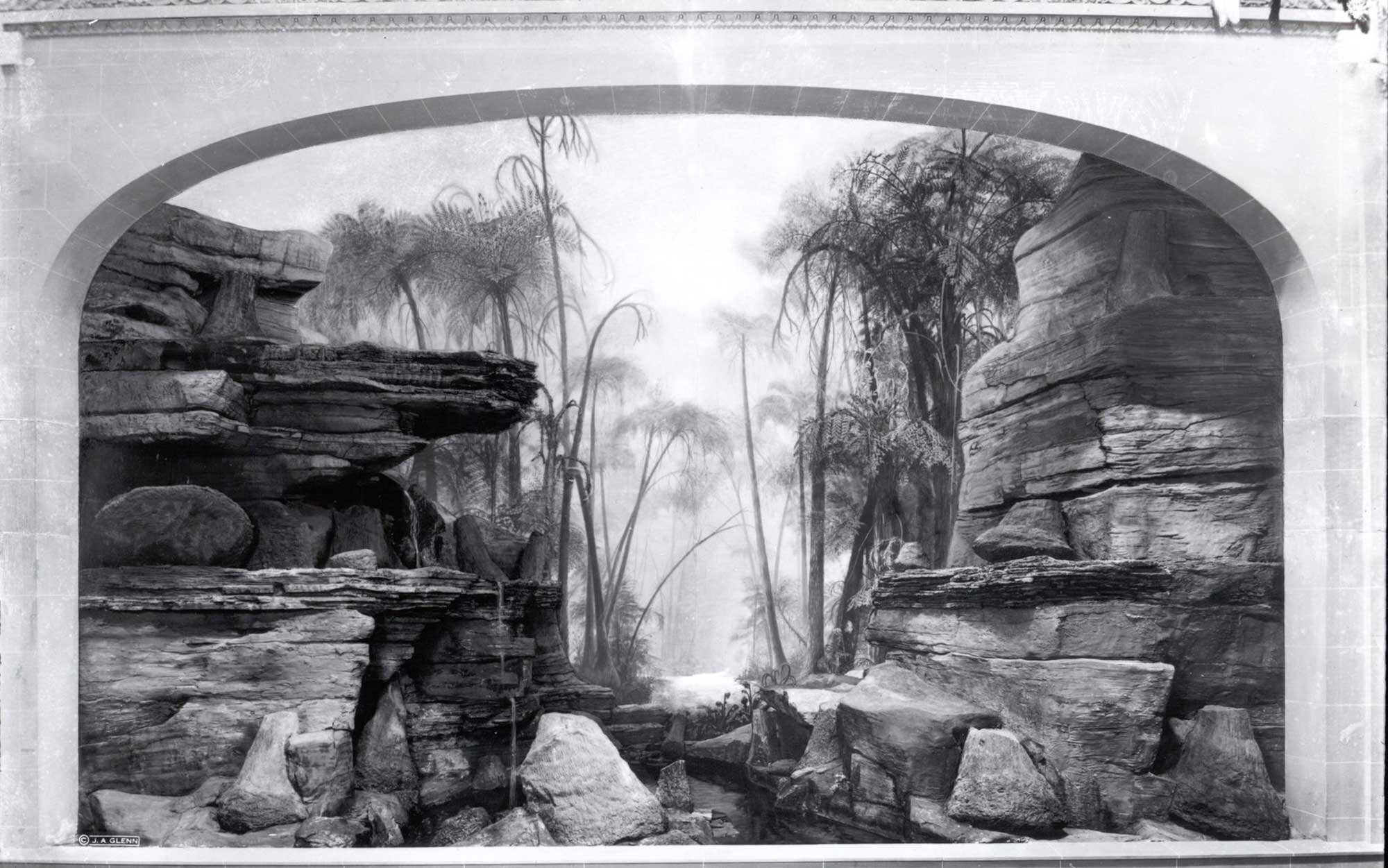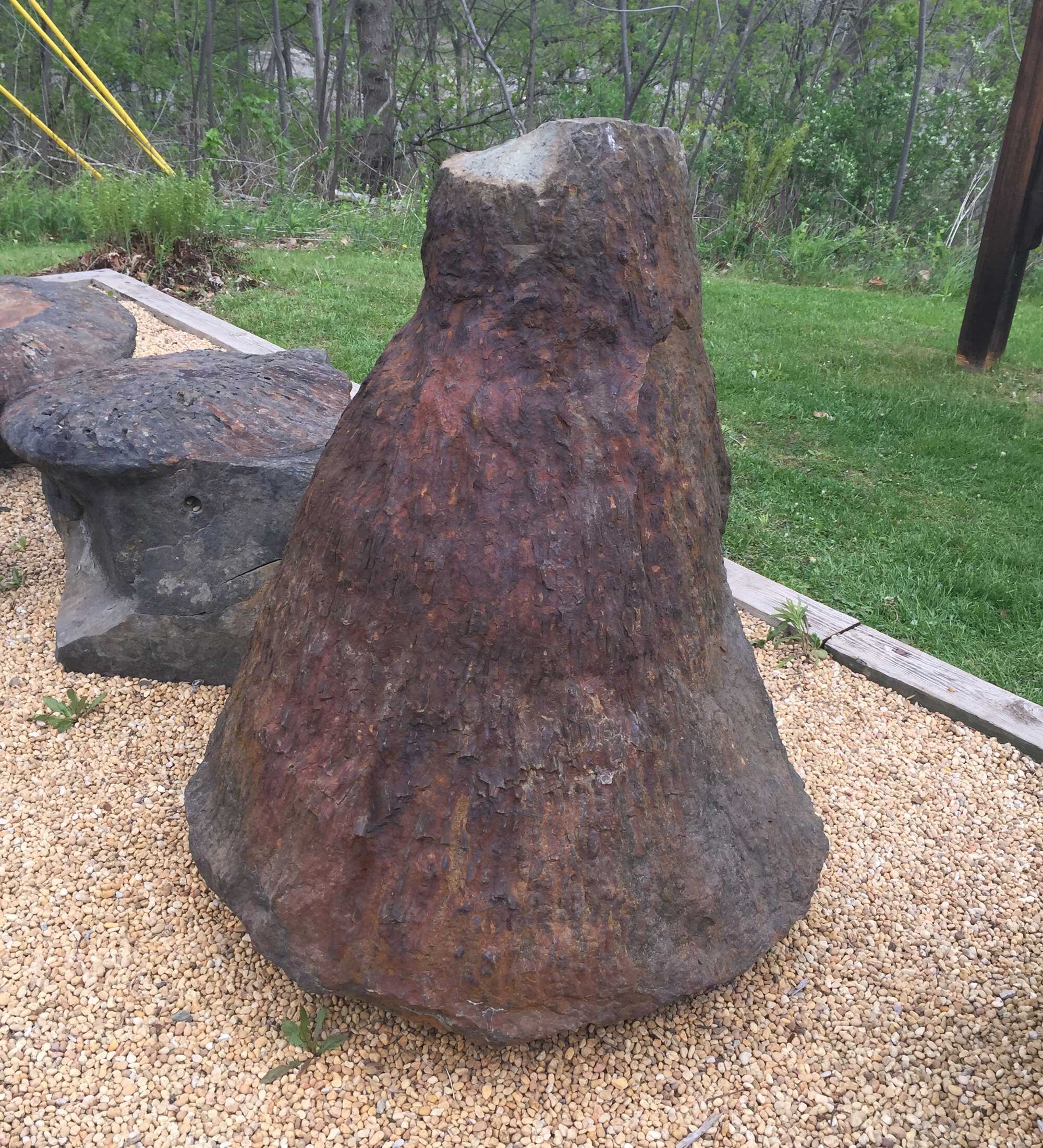Winifred Goldring
Winifred Goldring
Winifred Goldring
1888–1971
Winifred Goldring was one of the most prominent U.S. paleontologists in the first half of the 20th century. She was the first woman to serve as State Paleontologist of New York and as president of the Paleontological Society.
“Because by dint of hard work and never flagging energy she has gained fame in in scientific circles.”
— Albany Times-Union (1939), saluting Winifred Goldring on her appointment as State Paleontologist
Winifred was born near Albany, New York. She earned her bachelor’s and master’s degrees from Wellesley College in Massachusetts. Winifred was hired to develop public exhibits for the New York State Museum in 1914 and ended up working at the museum for forty years.
Winifred investigated some of New York’s most notable paleontological treasures. She studied one of the oldest known fossil forests preserved in Devonian (419–359 million years ago) rocks along Schoharie Creek near Gilboa, New York. Beginning around 1920, a dam was built on Schoharie Creek to supply water to New York City. The dam was constructed of local stone from a nearby quarry called Riverside Quarry. Due to the efforts of Winifred and others, many stumps from the Gilboa fossil forest were saved from the quarry before it was filled in and the area behind the dam was flooded.
Winifred published research on the Gilboa forest in the 1920s and also pursued projects to educate the public. She worked on a diorama of the Gilboa forest for the New York State Museum and was involved in planning an outdoor roadside exhibit of fossil stumps near Gilboa. While the museum diorama is now gone, the roadside display still exists. New research on the Gilboa fossil forest was done when Riverside Quarry was uncovered for a short time in 2010.
Winifred also researched strange, mound-like fossils preserved near Saratoga Springs. We now know that these mounds are stromatolites, layered structures created by mat-forming bacteria.
Winifred’s greatest scientific accomplishment was her research on the fossil record of “sea lilies,” or crinoids, animals that are related to starfish and sea urchins. She published a study on the Devonian crinoids of New York in which she described 155 species, 58 of them new to science. The work immediately made her a world-renowned expert on the group.
Winifred was colorful and outspoken. She rode in a motorcycle sidecar and carried a pistol in the field. At the same time, she was frustrated with her meager pay, and she even temporarily resigned over it in 1918. In 1929, she wrote to a friend:
“The work is very interesting, but I would not advise any woman to prepare for such specialization, because the chances that she would find that kind of position are slim; and anyway, it is very poorly paid work.”
— Winifred Goldring (1929), from a letter to Walter H. Bucher (excerpt illustrated on the blog Historic Science Gals, 28 April 2012)
Winifred died in 1971. One of her memorials said:
“In the United States, it is with great difficulty that a woman accedes to a high position in science. Had there been a women’s liberation movement in science in her day, I am positive that Winifred Goldring would have been in the forefront of such activity. It irked her immensely that there were so many outstanding male geologists and paleontologists who were vocally prejudicial to women in science. And it was saddening to her that more women did not pursue geology and paleontology in North America.”
— Donald W. Fisher (1974) in Memorials of the Geological Society of America
Winifred is remembered today with the “Winifred Goldring Award,” which is given to outstanding women doing graduate work in paleontology by the Association for Women Geoscientists and the Paleontological Society.
Winifred in the field at Rensselaer Falls, New York, 1932. Source: New York State Museum (Winifred Goldring, State Paleontologist).
Selected works by Winifred Goldring
Goldring, W. 1921. Annual growth rings in Carboniferous wood. Botanical Gazette 72: 326–330. Link
Goldring, W. 1923. The Devonian crinoids of the state of New York. The University of the State of New York Memoir 16, 670 pp. Link
Goldring, W. 1927. The oldest known petrified forest. The Scientific Monthly 24: 514–526. Link
Goldring, W. 1937. Cryptozoon: Plant nature and distribution. Science 86: 530–531. Link
Biographical references & further reading
2012. Historic Science Gals (untitled blog post), 28 April 2012. Link
Aldrich, M.L., A.E. Leviton, and M. Aldrich. 2005. Winifred Goldring (1888–1971): New York paleontologist. Northeastern Geology and Environmental Sciences 27: 229–238.
Arthur, T. 2013. It happened here—Winifred Goldring, paleontologist. New York State historical markers: It happened here, 22 July 2013. Link
Fisher, D.W. 1974. Memorial to Winifred Goldring 1888–1971. Memorials of the Geological Society of America 3: 96–107. Link
Kluessendorf, J. No date. Winifred Goldring: The godmother of Gilboa. Trowelblazers. Link
Kohlstedt, S.G. 1980. Goldring, Winifred, Feb. 1, 1888–Jan. 30, 1971. Paleontologist. Pp. 282–283 in B. Sicherman and C. Hurd Green, eds. Notable American women: The modern period: A biographical dictionary. Harvard University Press, Cambridge.
Robertson, C. no date. Winifred Goldring: Unearthing the world’s first forest. Online exhibit. Link
Stricker, B. 2017. Daring to dig : Adventures of women in American paleontology. PRI Special Publication No. 54. Paleontological Research Institution, Ithaca, New York.
Wilson, K.A. 2012. The Riverside Quarry at Gilboa, NY. A complex Middle Devonian Forest. Link
Winifred Goldring, State Paleontologist. Link















